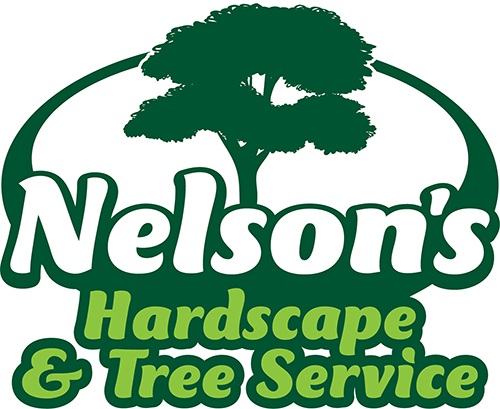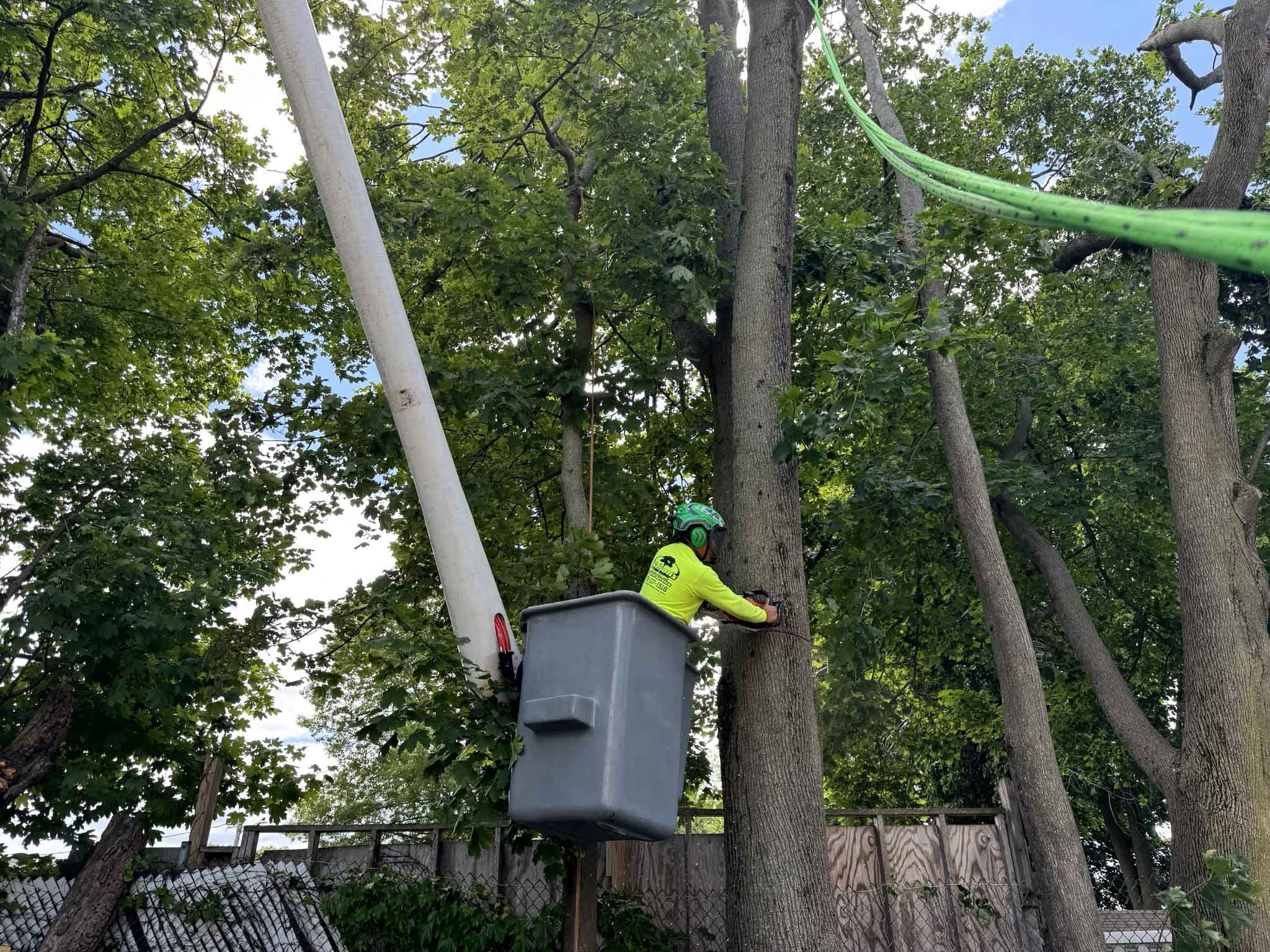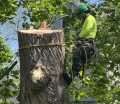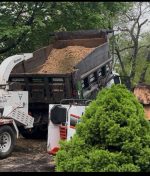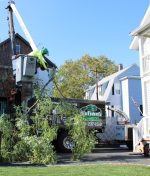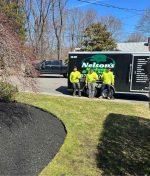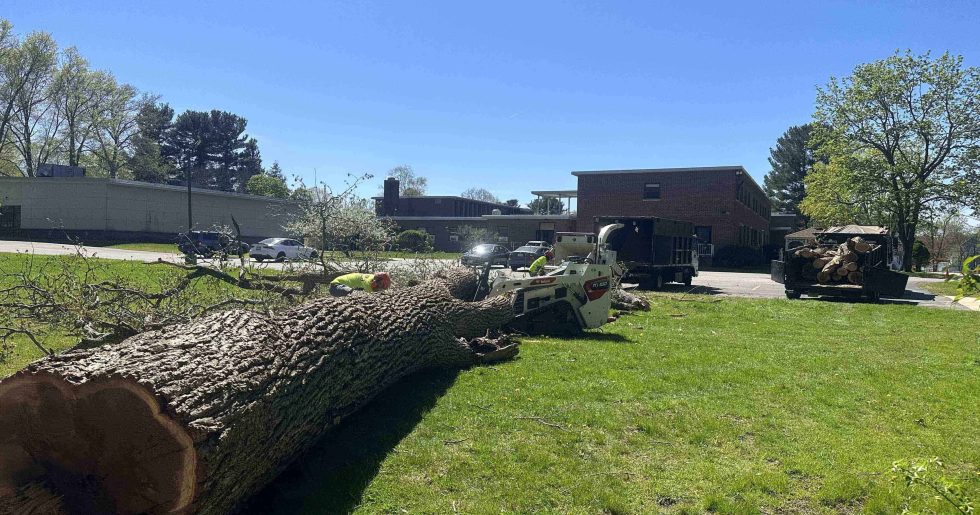
Tree stumps can be stubborn reminders of once-majestic trees that dominated your landscape. Whether you’re dealing with a single stump or multiple remnants from storm damage, understanding your tree stump removal options is crucial for reclaiming your outdoor space. These unsightly obstacles not only detract from your property’s aesthetic appeal but can also pose safety hazards and attract unwanted pests.
Professional tree stump removal requires expertise, proper equipment, and safety knowledge that homeowners often lack. Companies like Nelson’s Hardscape & Tree Service, Lynn, MA, specialize in comprehensive stump removal solutions that ensure complete elimination without damaging surrounding landscape features. With years of experience serving Massachusetts residents, professional services provide peace of mind and guaranteed results.
Method 1: Stump Grinding – The Professional Standard
Stump grinding stands as the most popular and efficient method for tree stump removal. This technique uses specialized machinery equipped with rotating cutting discs that systematically chip away the stump and root system below ground level.
The grinding process typically removes stumps 6-12 inches below the surface, allowing for immediate replanting or landscaping. Professional-grade grinders can handle stumps of virtually any size, from small ornamental tree remnants to massive oak or maple stumps.
Benefits of Stump Grinding:
- Complete removal without excavation
- Minimal landscape disruption
- Wood chips can be used as mulch
- Safe for surrounding plants and structures
- Environmentally friendly process
The resulting wood chips make excellent mulch for garden beds, creating a practical byproduct from the removal process. Most professional services include chip removal or distribution as part of their service package.
For those considering professional stump grinding services, the investment typically pays dividends in time saved and superior results compared to DIY alternatives.
Professional stump grinding equipment removing large tree stump
Method 2: Chemical Stump Removal – The Patient Approach
Chemical stump removal offers a less labor-intensive alternative that works over several months. This method involves drilling holes into the stump and applying chemical accelerants that speed up the natural decomposition process.
Common chemicals include potassium nitrate (stump remover) or high-nitrogen fertilizers. The process requires patience, as complete breakdown can take 6-12 months depending on stump size and wood density.
Chemical Removal Process:
- Drill multiple holes throughout the stump
- Apply chemical accelerant according to manufacturer instructions
- Cover with plastic sheeting to retain moisture
- Monitor progress over several months
- Remove softened wood manually
This method works best for smaller stumps and situations where immediate removal isn’t necessary. The gradual breakdown process requires minimal ongoing effort but demands considerable waiting time.
Safety considerations include proper chemical handling and ensuring pets and children cannot access treated areas. Always follow manufacturer guidelines and local regulations regarding chemical use.
Method 3: Manual Excavation – The Traditional Route
Manual excavation represents the most labor-intensive but thorough tree stump removal method. This approach involves digging around the entire root system and physically removing the stump using hand tools and mechanical assistance.
The excavation process begins by exposing the root structure through careful digging. Major roots require cutting with pruning shears, reciprocating saws, or root-cutting tools. Once the root system is sufficiently severed, the stump can be extracted using winches, come-alongs, or vehicle assistance.
Required Tools for Manual Excavation:
- Shovels and digging bars
- Root-cutting tools or chainsaws
- Winch or come-along system
- Safety equipment including gloves and eye protection
This method provides complete removal including the entire root system, preventing future sprouting. However, the physical demands and time requirements make it impractical for large stumps or multiple removals.
Professional tree removal services often combine excavation techniques with mechanical assistance to expedite the process while ensuring complete removal.
Expert Tip: Root System Assessment
Before choosing any removal method, assess the root spread by measuring the tree’s original diameter. Most root systems extend 2-3 times the trunk diameter, helping you plan the appropriate removal strategy and budget accordingly.
Method 4: Controlled Burning – The Fire Method
Controlled burning offers an effective solution for rural properties where fire restrictions don’t apply. This method requires careful preparation and adherence to local fire codes and permits.
The burning process involves creating a controlled fire directly on top of the stump, allowing sustained heat to consume the wood structure over several hours or days. Proper preparation includes clearing surrounding vegetation and having fire suppression equipment readily available.
Burning Preparation Steps:
- Check local fire restrictions and obtain permits
- Clear 10-foot radius around the stump
- Drill holes for better airflow
- Have water source and fire extinguisher ready
- Monitor weather conditions
This method works particularly well for large stumps that would be expensive to grind professionally. However, safety concerns and legal restrictions limit its applicability in urban and suburban areas.
Always consult local fire departments before attempting controlled burning, as many municipalities prohibit this practice regardless of property size.
For comprehensive stump removal in areas where burning isn’t permitted, professional emergency tree services can provide rapid response solutions.
Comparing Tree Stump Removal Methods
| Method | Time Required | Difficulty Level | Effectiveness | Best For |
|---|---|---|---|---|
| Stump Grinding | 1-4 hours | Professional | Excellent | All stump sizes |
| Chemical Removal | 6-12 months | Easy | Good | Small stumps |
| Manual Excavation | 4-12 hours | High | Excellent | Medium stumps |
| Controlled Burning | 1-3 days | Moderate | Good | Rural properties |
Safety Considerations and Best Practices
Tree stump removal safety cannot be overlooked regardless of the chosen method. Each technique presents unique hazards that require appropriate precautions and protective equipment.
Professional services maintain comprehensive insurance coverage and follow OSHA safety standards that protect both workers and property owners. DIY attempts often lack proper safety protocols and can result in serious injuries or property damage.
Universal Safety Guidelines:
- Wear appropriate personal protective equipment
- Check for underground utilities before digging
- Maintain safe distances from power lines
- Use proper lifting techniques to prevent injury
- Have first aid supplies readily available
Underground utility lines pose significant risks during excavation or grinding operations. Always contact your local utility marking service before beginning any removal project, regardless of size or scope.
When in doubt about safety procedures or equipment requirements, consulting with tree cabling professionals can provide valuable insights into safe tree-related work practices.
Cost Analysis and Return on Investment
Tree stump removal costs vary significantly based on method selection, stump characteristics, and regional labor rates. Understanding these factors helps homeowners make informed decisions that balance budget constraints with desired outcomes.
Professional stump grinding typically offers the best value proposition when considering time investment, results quality, and safety factors. While initial costs may seem higher than DIY alternatives, the guaranteed results and eliminated safety risks often justify the expense.
Factors Affecting Removal Costs:
- Stump diameter and height
- Root system complexity
- Site accessibility
- Soil conditions
- Number of stumps requiring removal
Long-term property value considerations often favor complete professional removal over temporary solutions. Properly removed stumps eliminate ongoing maintenance issues and create opportunities for landscape improvements that enhance property values.
Environmental Impact and Sustainability
Modern tree stump removal practices increasingly emphasize environmental responsibility and sustainable waste management. Professional services typically recycle wood waste into useful products rather than sending materials to landfills.
Stump grinding produces wood chips that serve as excellent organic mulch for gardens and landscaping projects. This recycling approach reduces waste while providing valuable soil amendment materials for property owners.
Chemical removal methods require careful consideration of environmental impact, particularly regarding groundwater contamination and effects on surrounding vegetation. Always choose environmentally approved products and follow application guidelines strictly.
Frequently Asked Questions
How long does professional stump grinding take?
Ans: Most residential stumps can be ground in 1-4 hours depending on size and root complexity. Multiple stumps or difficult access locations may require additional time.
Will stump removal damage my lawn or landscape?
Ans: Professional grinding minimizes landscape damage through proper equipment selection and technique. Small areas of turf may require reseeding, but structural damage to hardscaping or plantings is rare with experienced operators.
Can stumps regrow after grinding?
Ans: Properly ground stumps below soil level cannot regrow since the root crown is completely removed. Surface-level grinding may allow sprouting from remaining root portions.
What happens to the wood chips after grinding?
Ans: Most services offer chip removal or distribution on your property as mulch. The chips make excellent organic matter for garden beds and tree plantings.
Conclusion
Effective tree stump removal requires careful consideration of available methods, safety requirements, and long-term goals for your landscape. While DIY approaches may seem cost-effective initially, professional services often provide superior results with guaranteed safety and completion.
Whether you choose grinding, excavation, chemical treatment, or burning, proper technique and safety measures ensure successful stump removal without property damage or personal injury. The investment in professional tree stump removal services typically pays dividends through time savings, guaranteed results, and enhanced property value.
Ready to Remove Those Stubborn Stumps?
Don’t let unsightly tree stumps diminish your property’s beauty and value. Nelson’s Hardscape & Tree Service provides professional tree stump removal solutions throughout Massachusetts with guaranteed results and competitive pricing.
Call (978) 300-7370 or visit our website for immediate assistance
